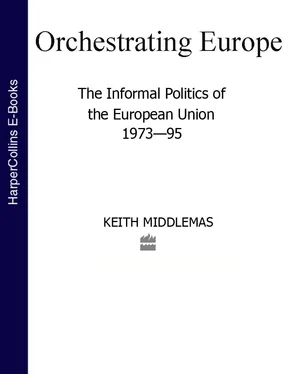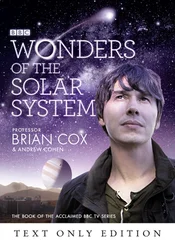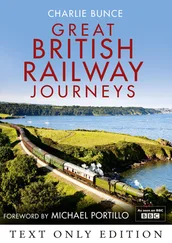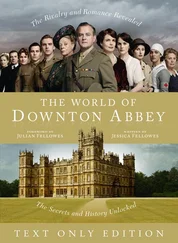Having reached a point in 1990 where a contemporary historian could not reasonably go further forward in a British context, I have tried to apply the same method on the European scale, by looking not only at the Community’s history over the last twenty years but at the interchanges between a much broader range of players or constellations than is usual in the approaches of other disciplines. To borrow a phrase of Andrew Shonfield’s, I hoped to study a great theme from a single standpoint, to discover an underlying coherence in the idea that the arena where these players meet could be described as informal politics, part of the overall system whose more obvious features are of course formal.
Living in a country which, more than any other member of the Community, has difficulty with the concept of being European, yet which I firmly believe has no special role and hardly any living space outside it, I am disturbed by the distorted and frequently trivial way the Community is portrayed in the press and on television by all but a handful of commentators. Apart from the brief period in 1972–4, and during the 1975 referendum, British governments have done little in their public discourse to make clear what is at stake, so that stereotypes are used habitually which provoke incomprehension if not derision across the Channel.
What is said here is meant therefore also as a contribution to perceptions: as Rudyard Kipling put it in Something of Myself in 1891, ‘trying to tell the English something of the world outside England – not directly, but by implication … a vast conspectus of the whole sweep and meaning of things …’. (Kipling of course wrote ‘Empire’ not Europe.) To start with, the Community is not just Brussels, the Council of Ministers and the Commission, but fifteen member states of varying size, importance and interests, some of which are very much more effective than others (insofar as their games lie within Europe). Beyond them, but in overlapping circles, range other players at national or regional level, of different status operating from different standpoints. There is no ideal Europe, no single picture, outside the emptiness of political rhetoric; just as there is no one centre. The centre is wherever the players meet. Those from ‘above’ may be formally superior, but informally, when they meet as a matter of common interest, it is each one’s effectiveness that counts.
The question to ask here is not ‘what is Europe?’, because in this dimension Europe is whatever you see, but how, informally, does the Community function, how do governments and non-governmental players act and what do they try to achieve? Does informal politics help to ameliorate the deep-rooted discords between north and south, core and periphery, small states and large, Anglo-Saxon and continental mentalities? Does it facilitate the entry of new players? Does it reduce rigidities and friction which would otherwise make the Community a less efficient mechanism for what its members want?
The Europe which questions like these throws into focus is one of interests, elites and powerful groups. It is vital to study these as they are: Europe as it is, not as people might wish it to be, as a preliminary to changing it. Players in the informal sector of a system are those who choose to enter out of self-interest, who have the willpower and resources to stay in and the capacity to make themselves heard in that highly competitive arena. Lack of resources or inability to form stable alliances condemns the rest to marginal status or, like small companies, to reliance on whatever support they can get at national or regional level. There is no democratic bias here.
But not all roads in the EU’s history lead to the same outcome. The narrative from 1973 to the present given in chapters 3to 5is intended to make clear how the European project revived after a long stagnation, and why the Single Act led on to the Treaty of Union at Maastricht – in the context of a Europe which had been fundamentally altered by the collapse of the Soviet Union after 1989. There are other ways of telling the story because the Community’s development is not teleological, not precisely delimited by the Treaties. How it evolves and what new legal texts it produces are for the players to decide.
As an historian I have tried not to confine myself to any one interpretation, whether federal, functional or intergovernmental, and to proceed empirically, taking account of all the significant players. The project assumes no hierarchy of players, no measured evolution: it examines ‘punctuated equilibrium’, change rather than progress, short bursts of energy interrupted by longer troughs (usually associated with recession). Of these, the economic and financial crisis of 1973–5 profoundly altered the balance between industry and labour, while that of 1981–3 had a direct effect on the behaviour of large firms and their federations towards the Community. The more recent 1990–93 recession ran parallel to a political cleavage between governments and elites on one side, publics and media on the other, in all member states, which severely impaired the Union (as the Community had by then become) and delayed completion of the internal market. Deep discontent with Community institutions seemed to be a sort of retribution for pre-Maastricht euphoria, as the last vestiges of post-War settlements disappeared, to be replaced by anguish at the threats to welfare systems and national identities, the latter at least being one long consequence of 1989.
There is a difficulty with this approach to incremental change. Existing studies of the Community and its processes take for granted a sense of progress and seek general conclusions, which the detailed evidence of what large numbers of players do does not always substantiate. Self-interest and bargaining, as Richard Griffiths shows in his historical introduction, written from the EU’s own archives, bulk much larger than earlier accounts, written by committed Europeans, allowed.
At best these concentrated on peak organizations or federations. But the primary actors were not usually federations but their members, for whom central bodies served mainly to correlate the varying opinions within them. A group study of such bodies gives an illusory impression of continuity. Likewise, most large firms or banks had a presence in the Community from the 1970s onwards. But generally their interest increased substantially and in a qualitative way in the 1980s, so that they appear to be now fully engaged as players; yet the intensity and scope of their involvement differs according to what is at stake, and may diminish (as many companies’ efforts did, once the internal market legislation was in place).
Either way, corporate players helped to create the Community’s informal political infrastructure, as they did nation states’ systems rather earlier during the twentieth century. In the European Union, however, they operated in greater freedom from the constraints of the past, because the Community is only an imperfect or quasi-state, some thirty-seven years old. Its system is different from those of nation states and the degree of informality greater, because of its institutional heterodoxy.
All this makes it necessary to examine the links and networks that have grown up, and to look at how similar informal politics operate in the European Court, the Parliament, the regions and among financial players or central banks, in their context rather than in isolation. Networks in the 1990s are growing fastest in the recently colonized commercial or financial spheres. They have always crossed borders, but here borders have ceased to count. The increase by volume is perhaps the most noticeable feature of the last decade; but the fact that major players can no longer ignore less relevant areas, for fear that their competitors will establish bridgeheads there, suggests that the quality of change is more important.
Читать дальше









![Brian Thompson - A Monkey Among Crocodiles - The Life, Loves and Lawsuits of Mrs Georgina Weldon – a disastrous Victorian [Text only]](/books/704922/brian-thompson-a-monkey-among-crocodiles-the-life-thumb.webp)


